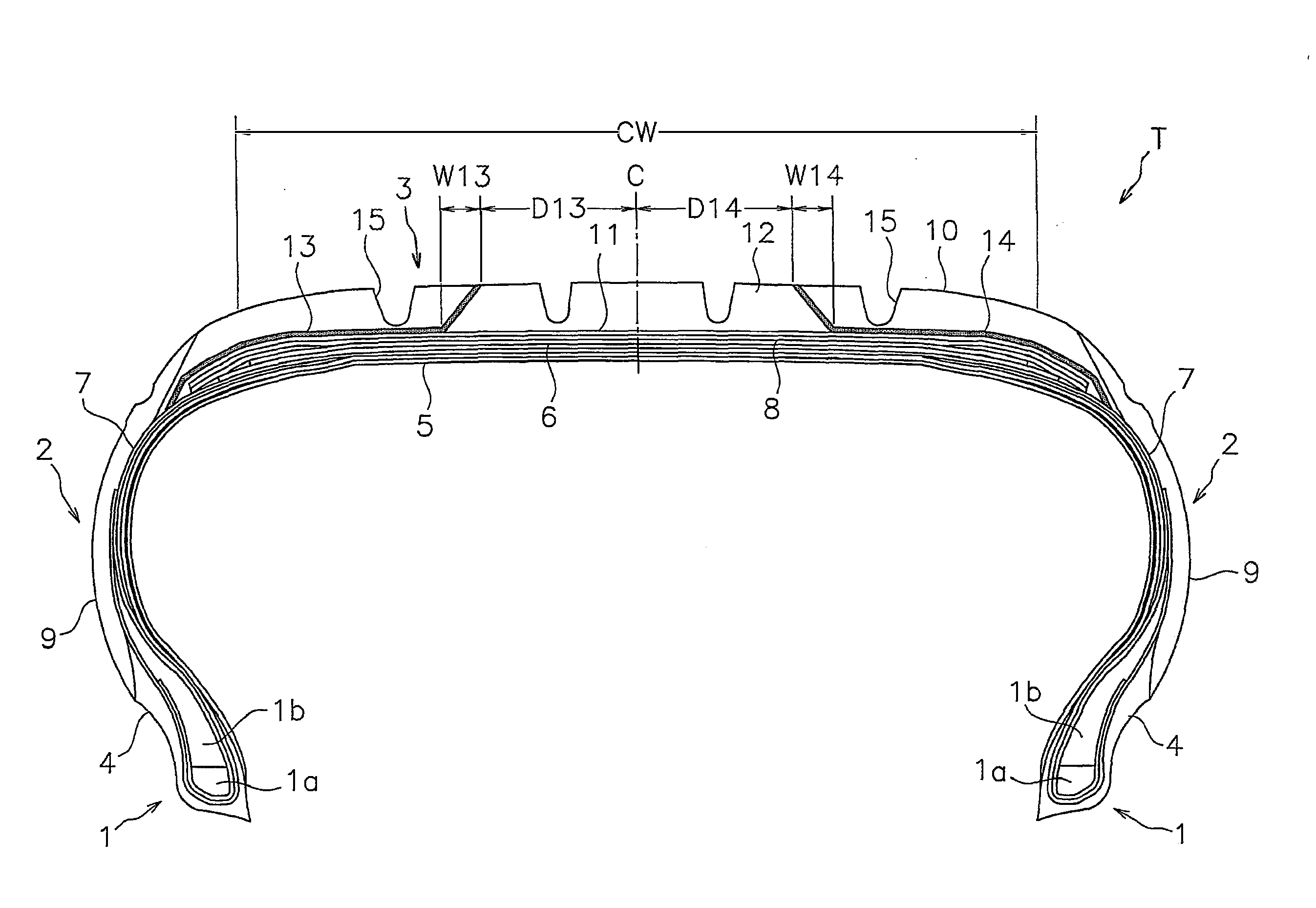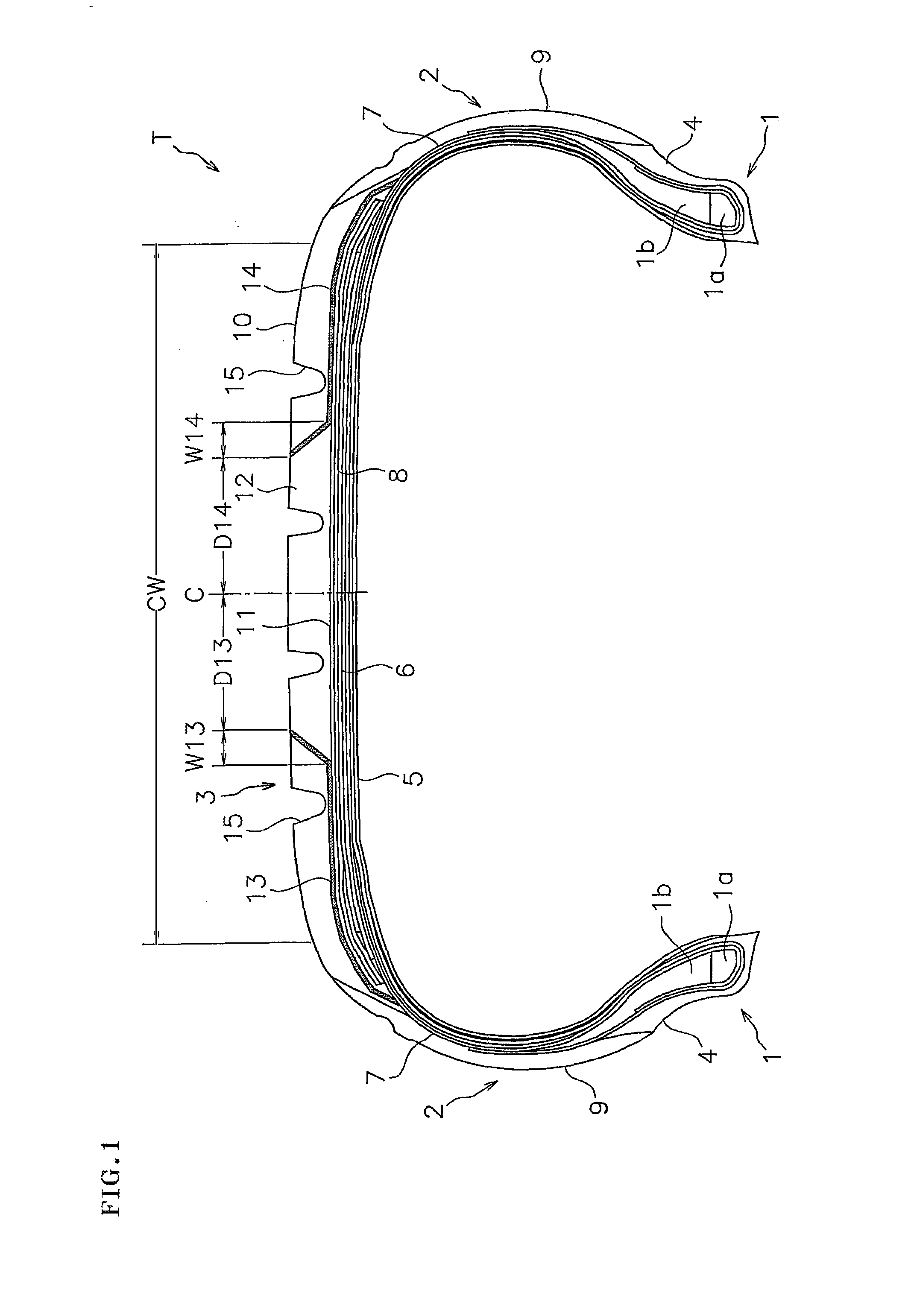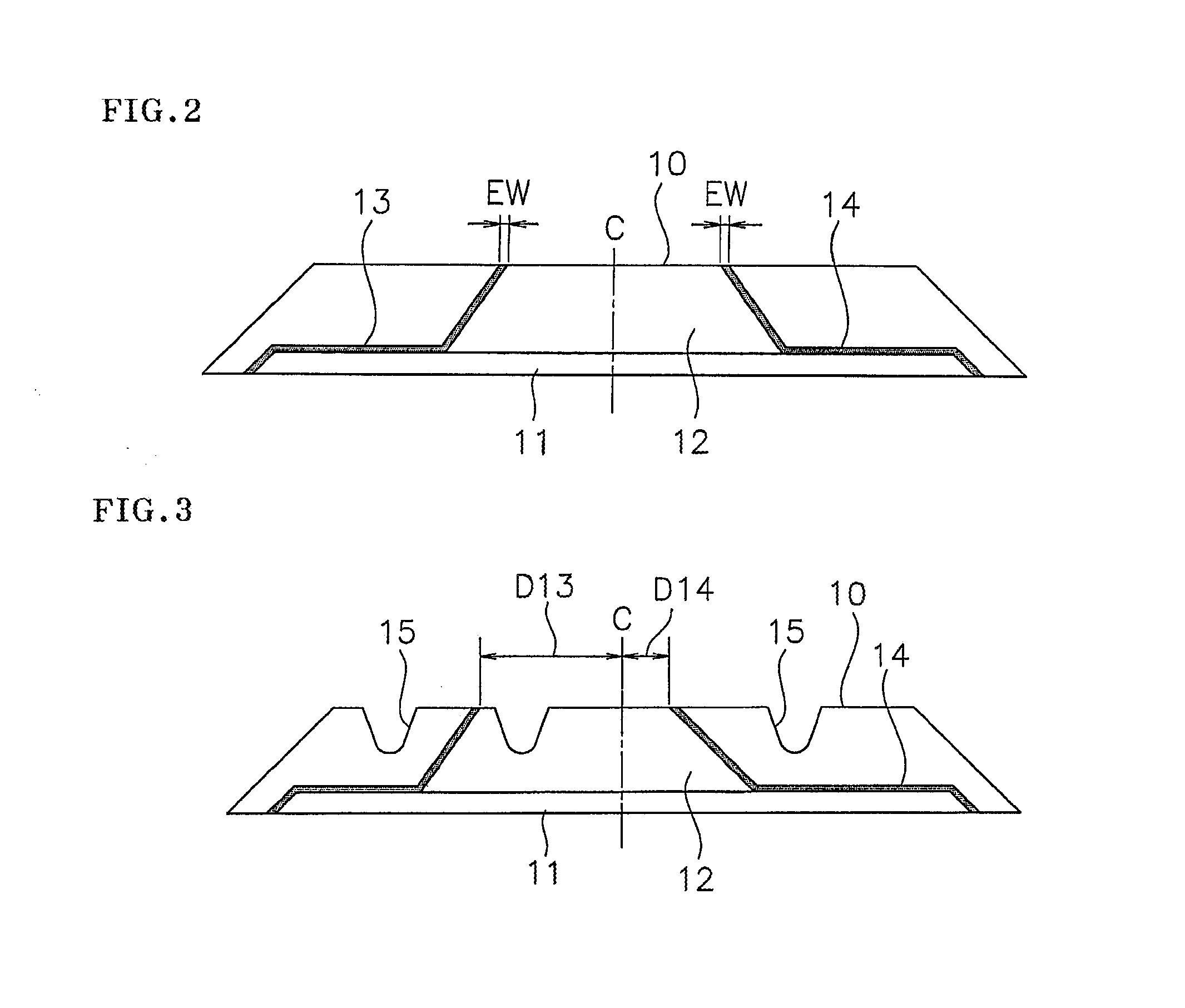Pneumatic tire
a technology of pneumatic tires and conductive parts, applied in the field of pneumatic tires, can solve the problems of reducing productivity and uniformity, complication of manufacturing steps, and radio noises, and achieve the effects of reducing the range, and reducing the cost of production
- Summary
- Abstract
- Description
- Claims
- Application Information
AI Technical Summary
Benefits of technology
Problems solved by technology
Method used
Image
Examples
example
[0116]An example tire which concretely shows the structure and effect of the present invention will be explained. An evaluation of each of performances is executed as follows.
[0117](1) Electrical Conduction Performance (Electric Resistance Value)
[0118]An electric resistance value was measured by applying a predetermined load to the tire installed to the rim, and applying an applied voltage (500V) to a metal plate with which the tire grounds from the shaft supporting the rim.
[0119](2) Uniformity
[0120]Based on a test method defined in JISD4233, LFV (lateral force variation) was measured. Specifically, an amount of fluctuation of a force in a tire lateral direction which is generated at a time of rotating the tire while pressing it against a rotating drum was measured, and an evaluation was carried out with an inverse number of a measured value. A result of a comparative example 1 is set to 100 so as to be indexed, and the greater numerical value indicates a more excellent uniformity.
[...
PUM
| Property | Measurement | Unit |
|---|---|---|
| angle | aaaaa | aaaaa |
| rubber hardness | aaaaa | aaaaa |
| exposure width | aaaaa | aaaaa |
Abstract
Description
Claims
Application Information
 Login to View More
Login to View More - R&D
- Intellectual Property
- Life Sciences
- Materials
- Tech Scout
- Unparalleled Data Quality
- Higher Quality Content
- 60% Fewer Hallucinations
Browse by: Latest US Patents, China's latest patents, Technical Efficacy Thesaurus, Application Domain, Technology Topic, Popular Technical Reports.
© 2025 PatSnap. All rights reserved.Legal|Privacy policy|Modern Slavery Act Transparency Statement|Sitemap|About US| Contact US: help@patsnap.com



